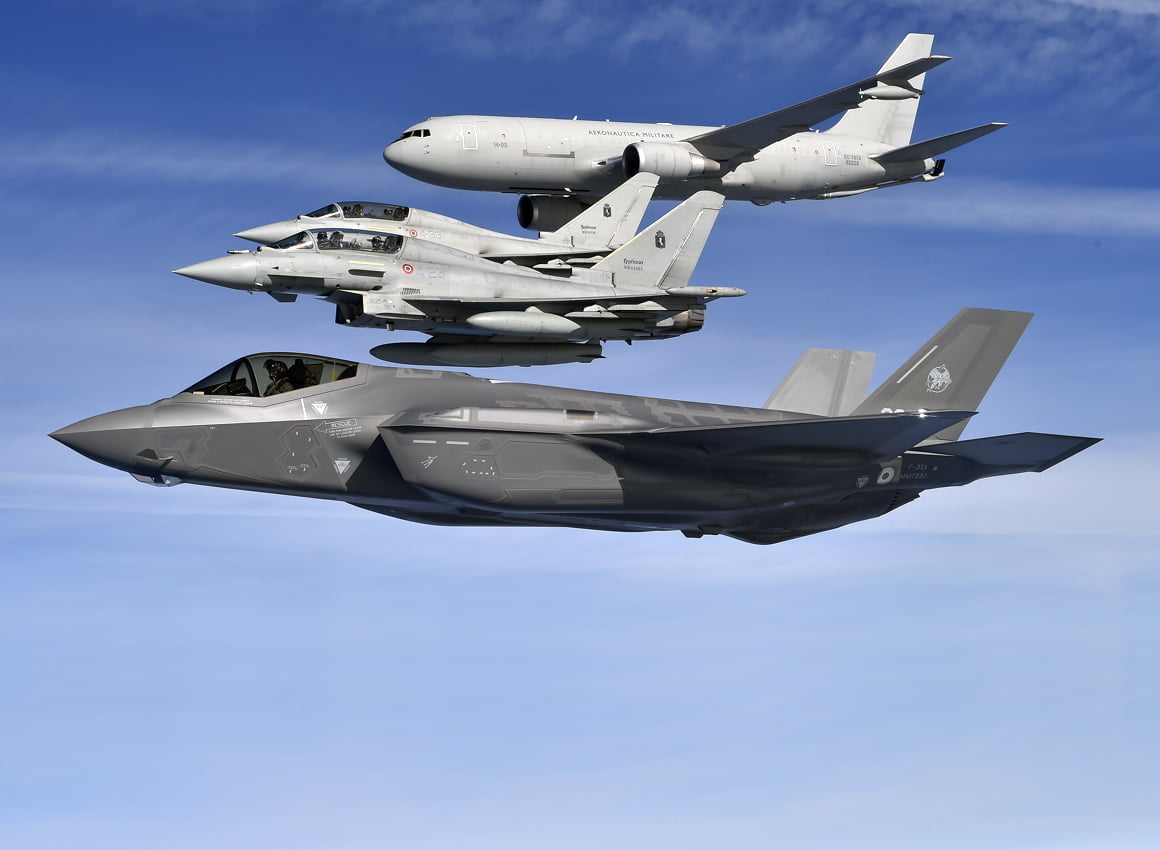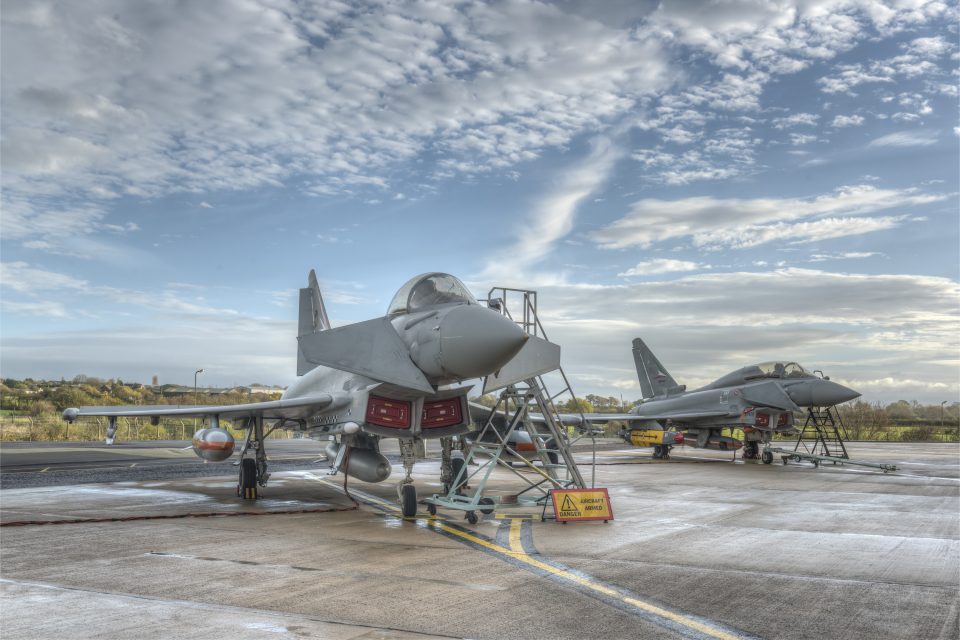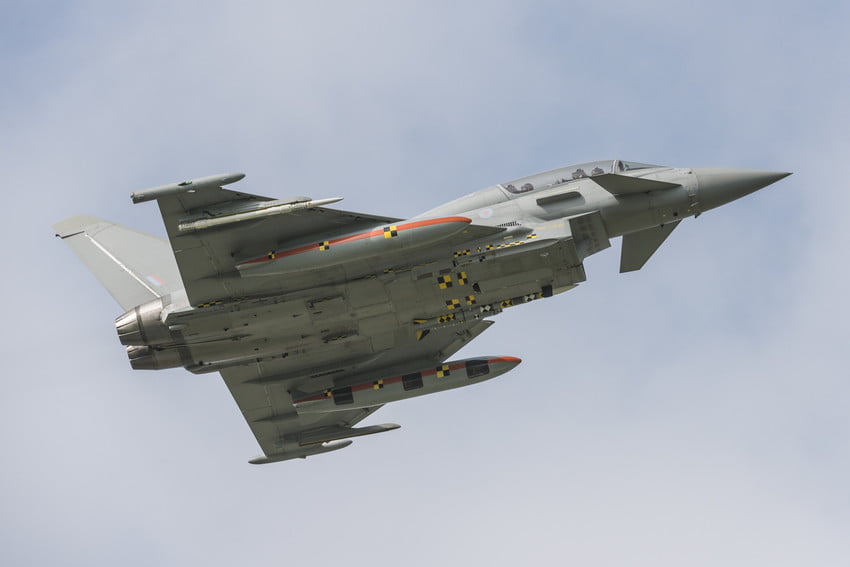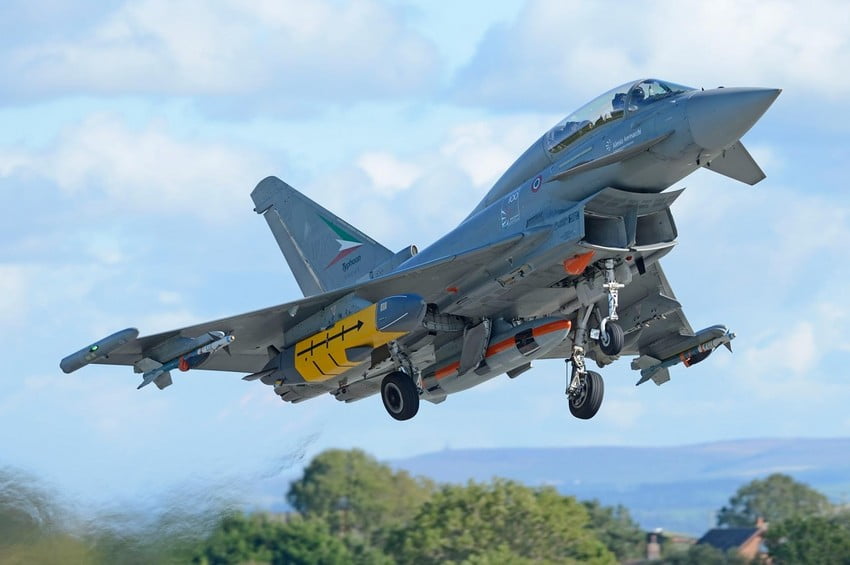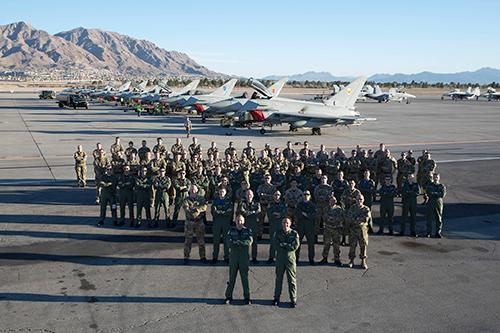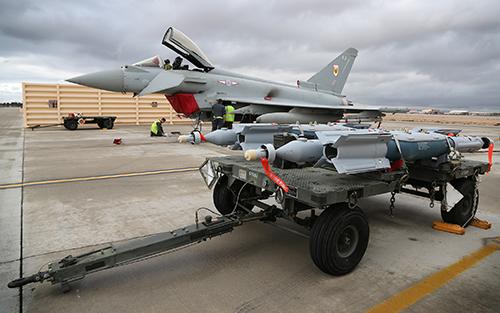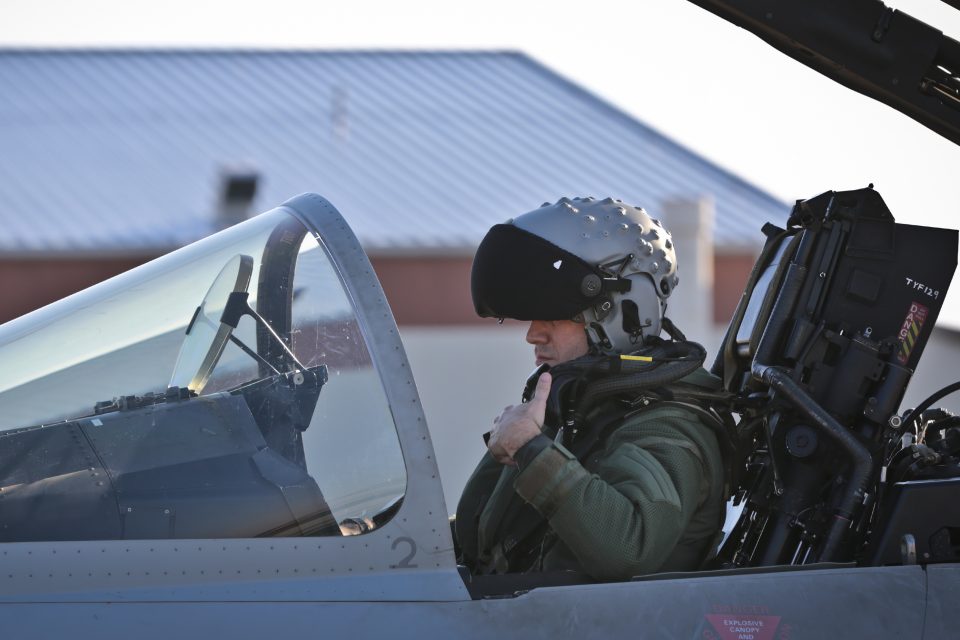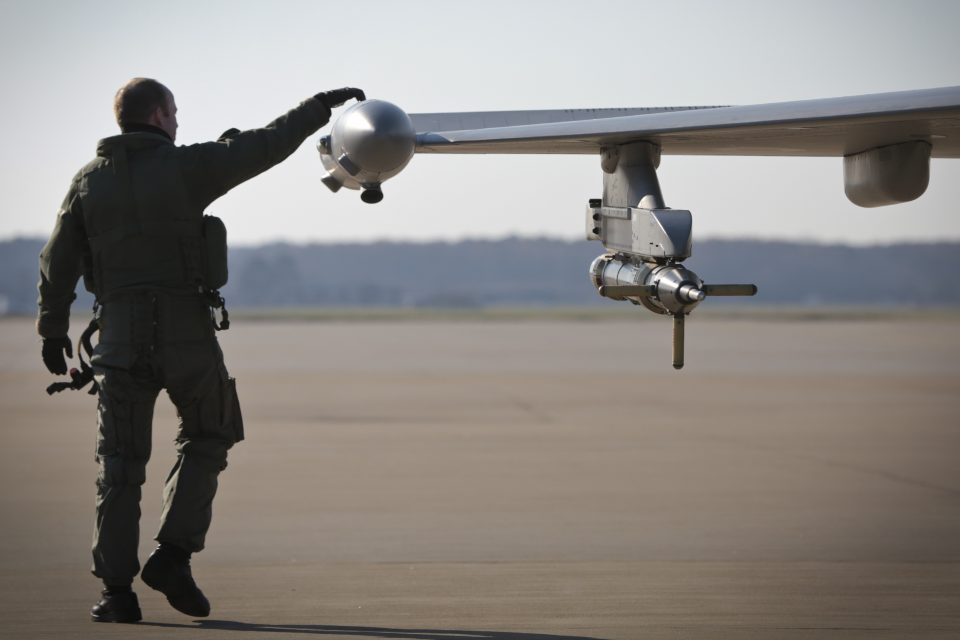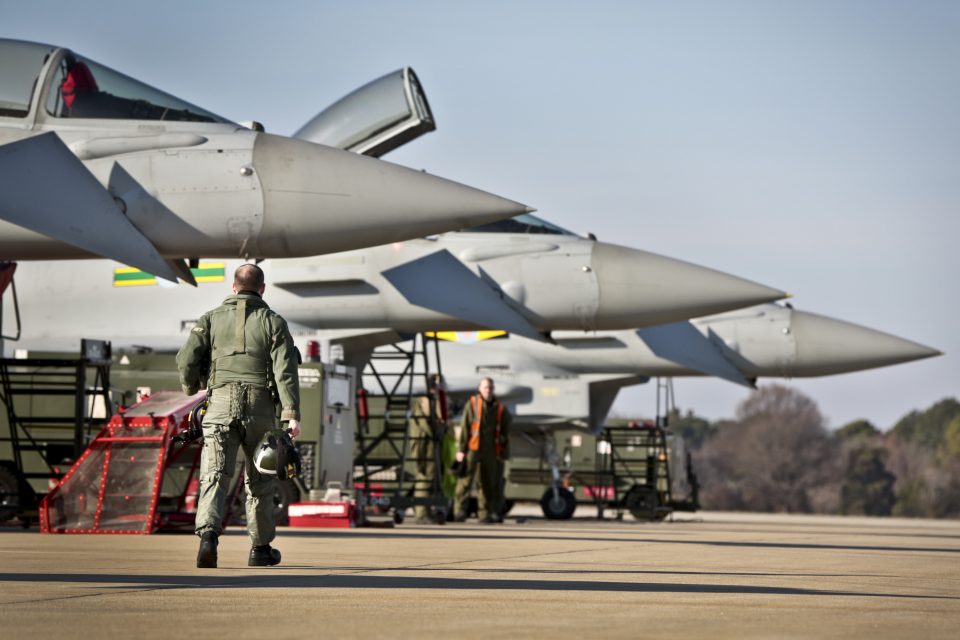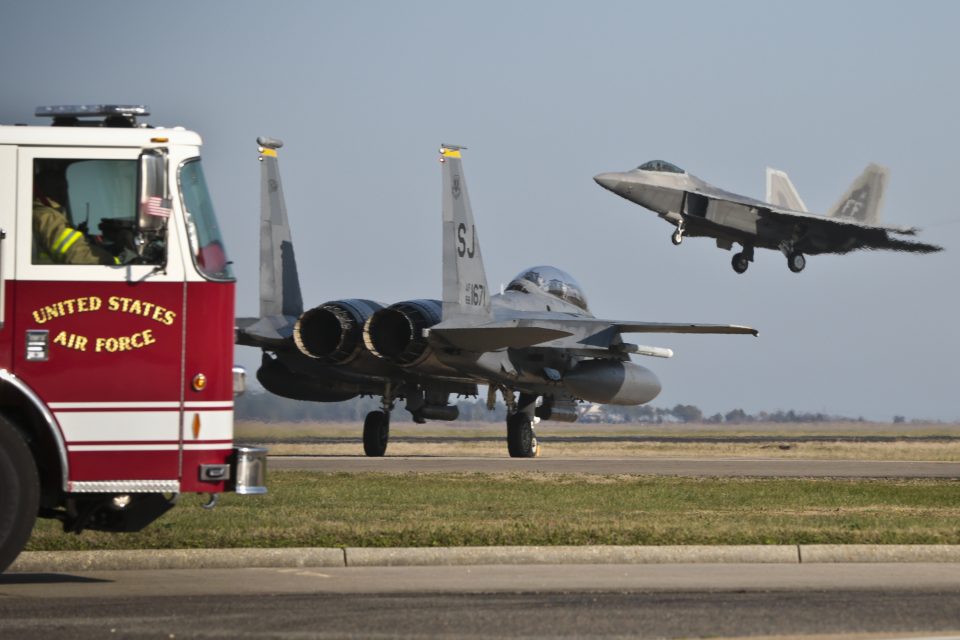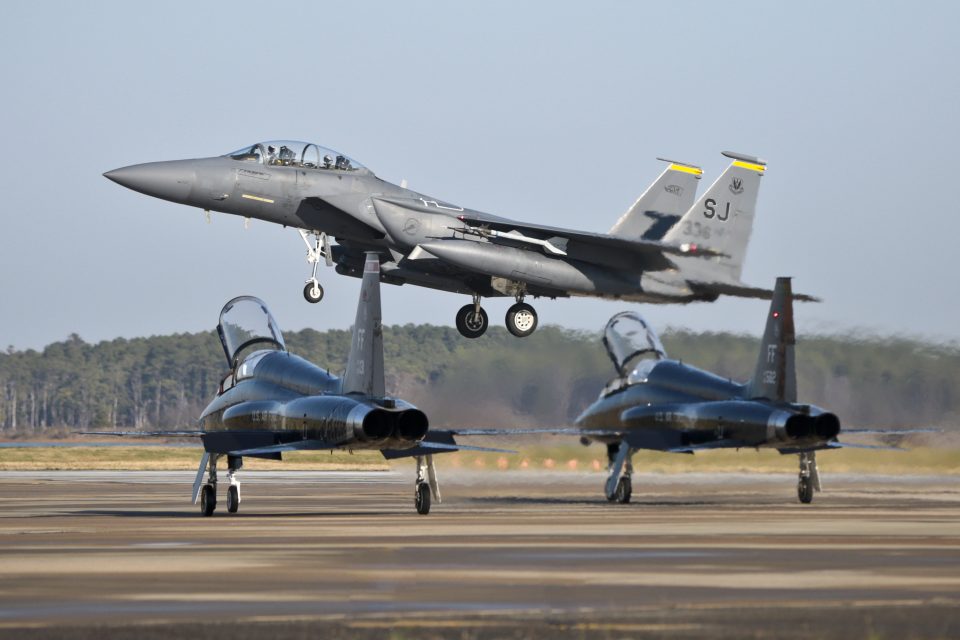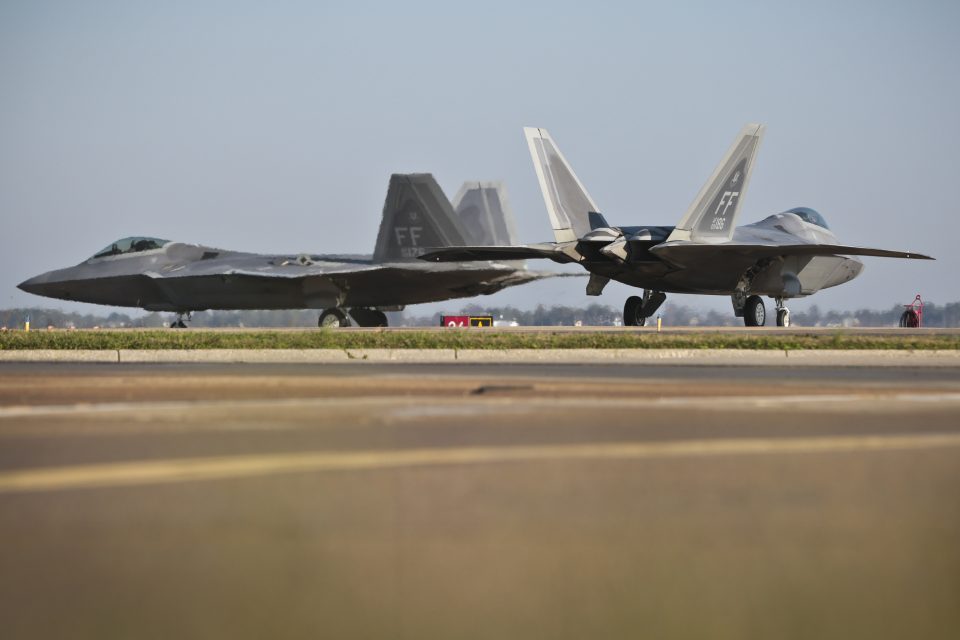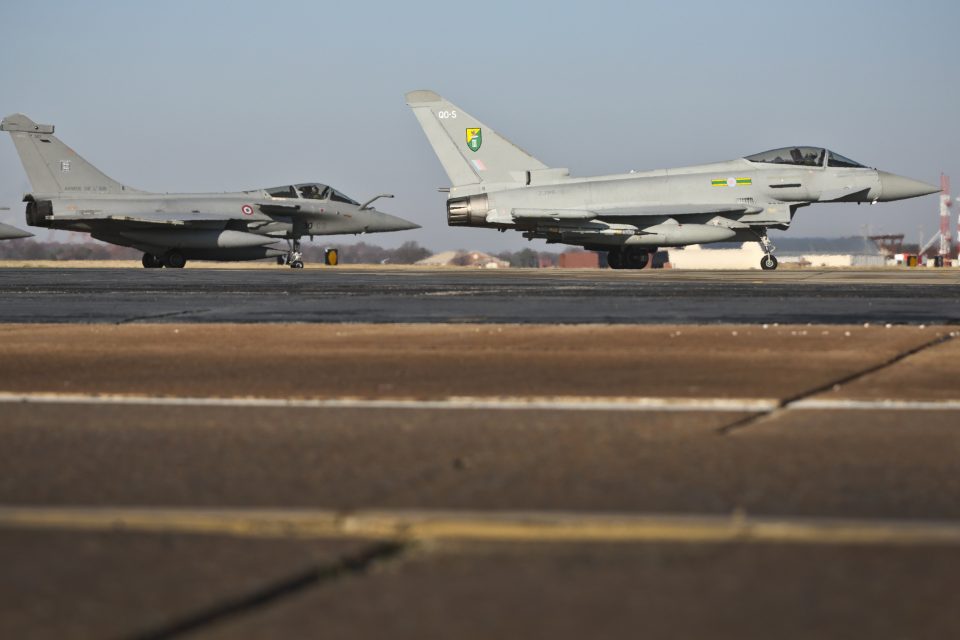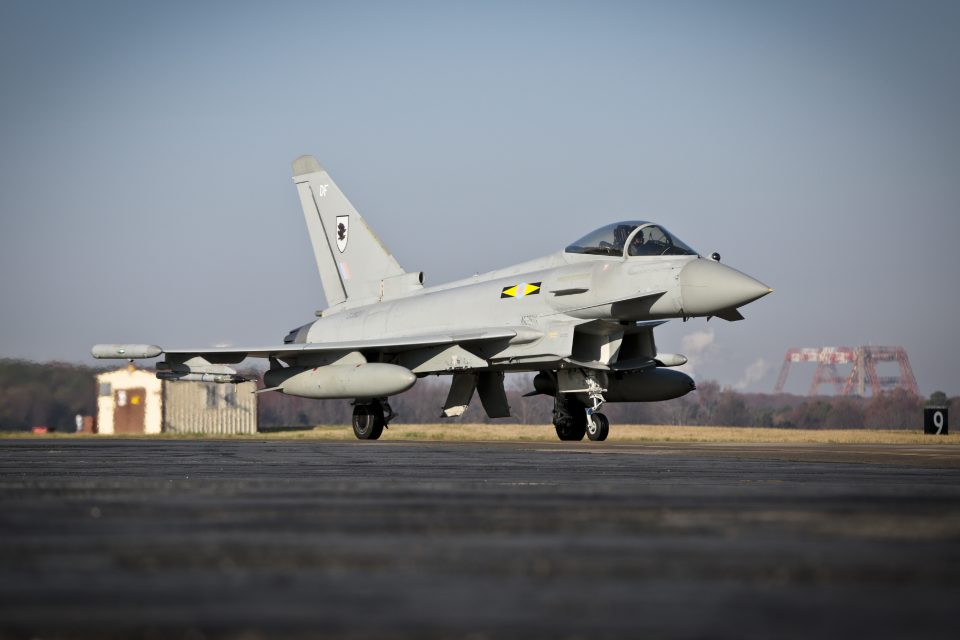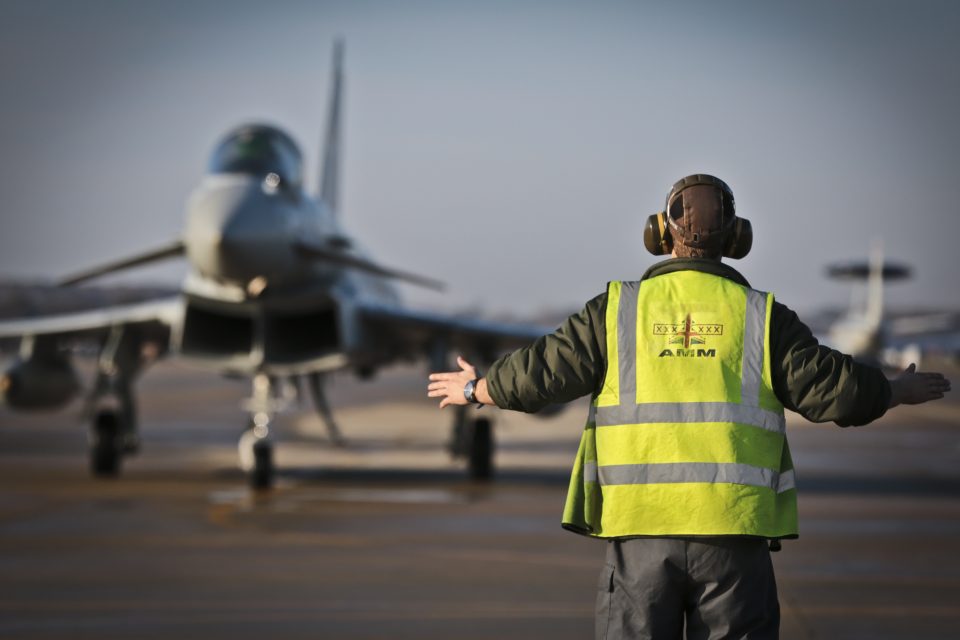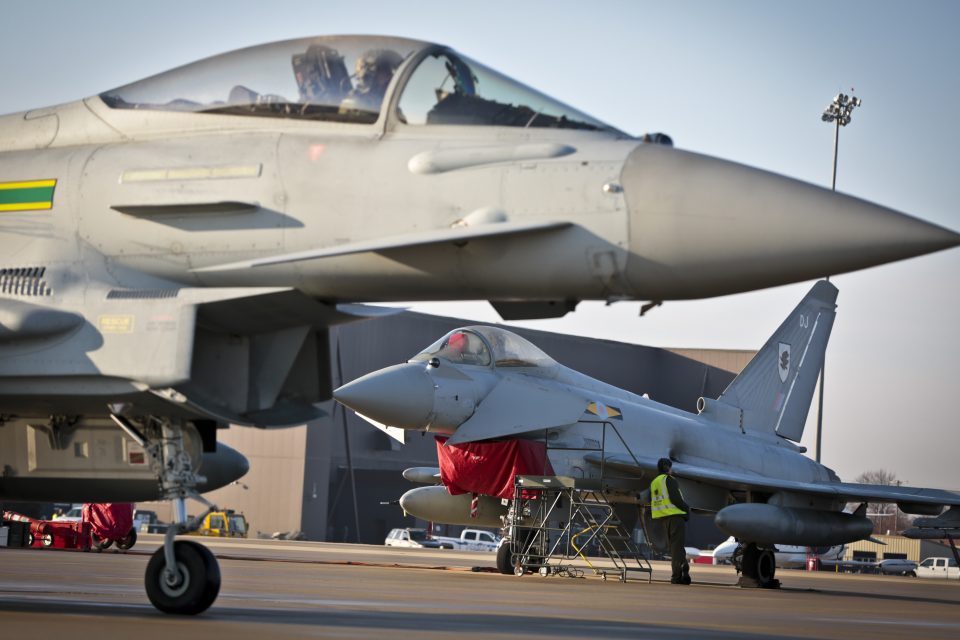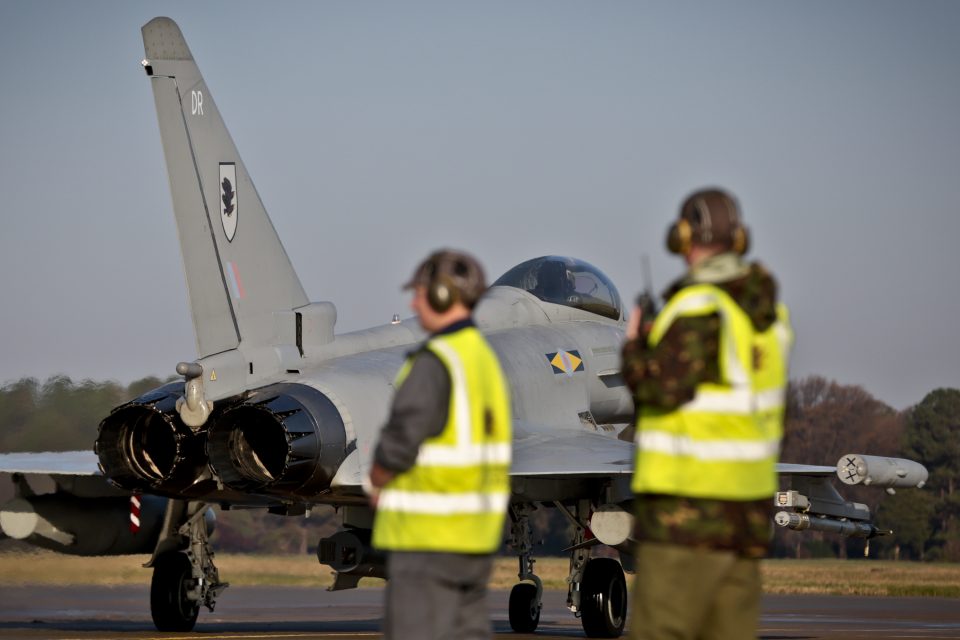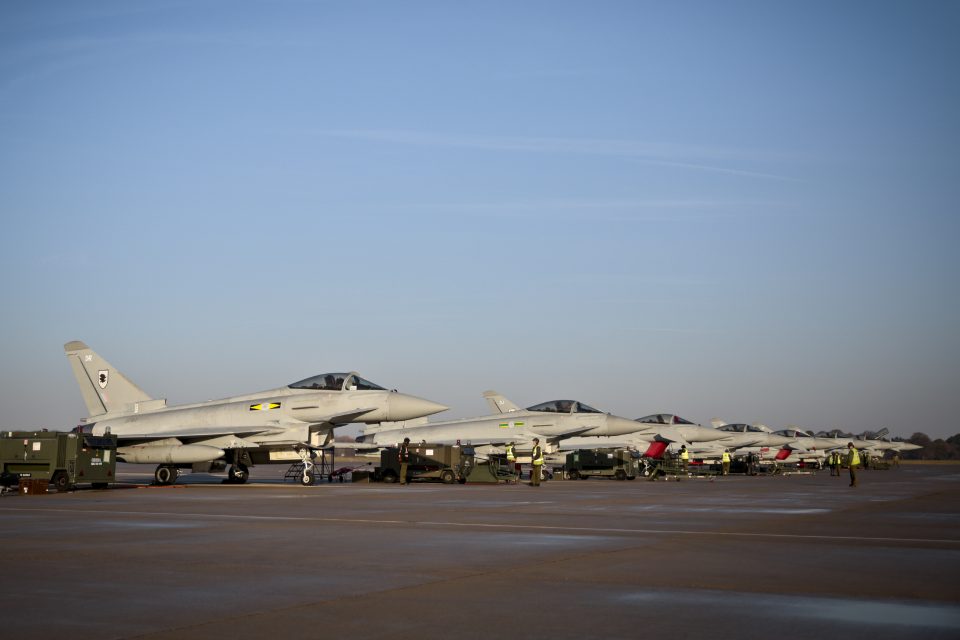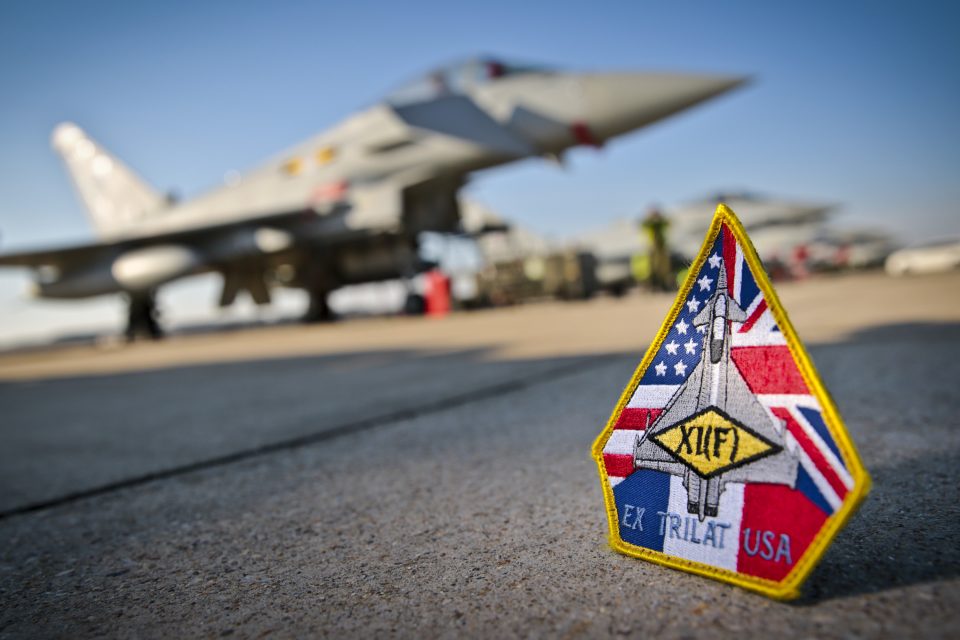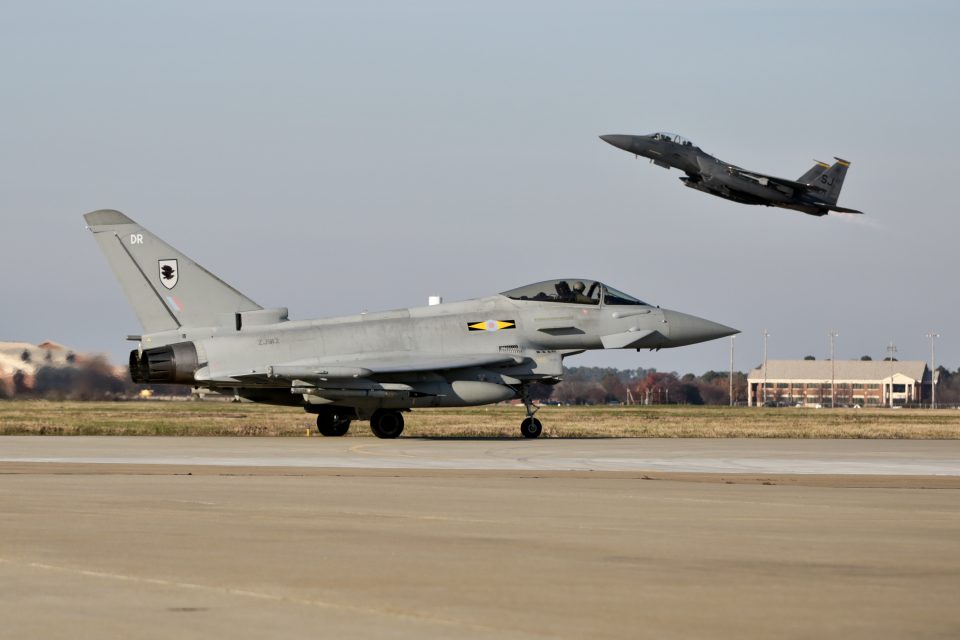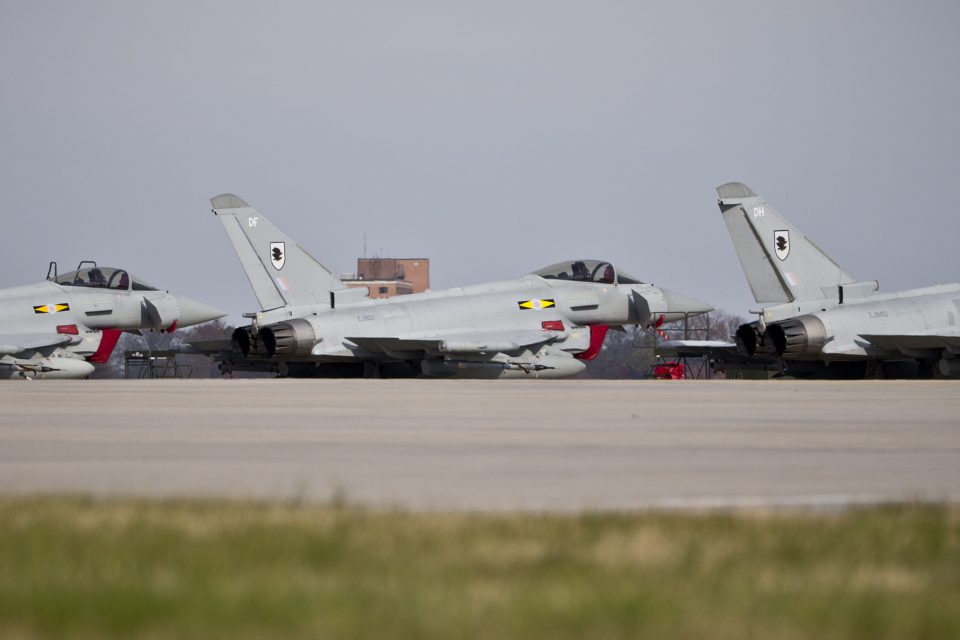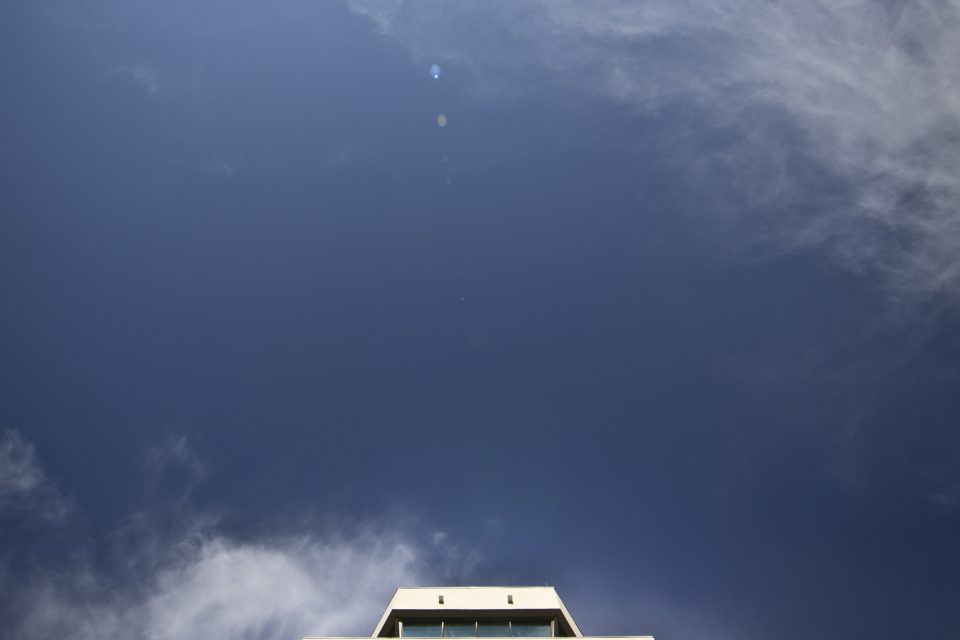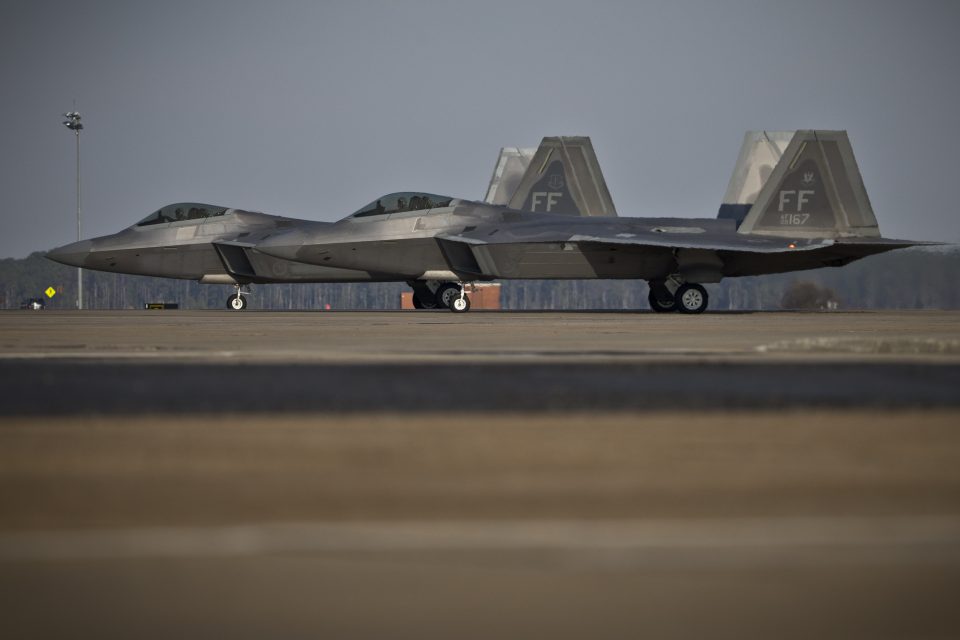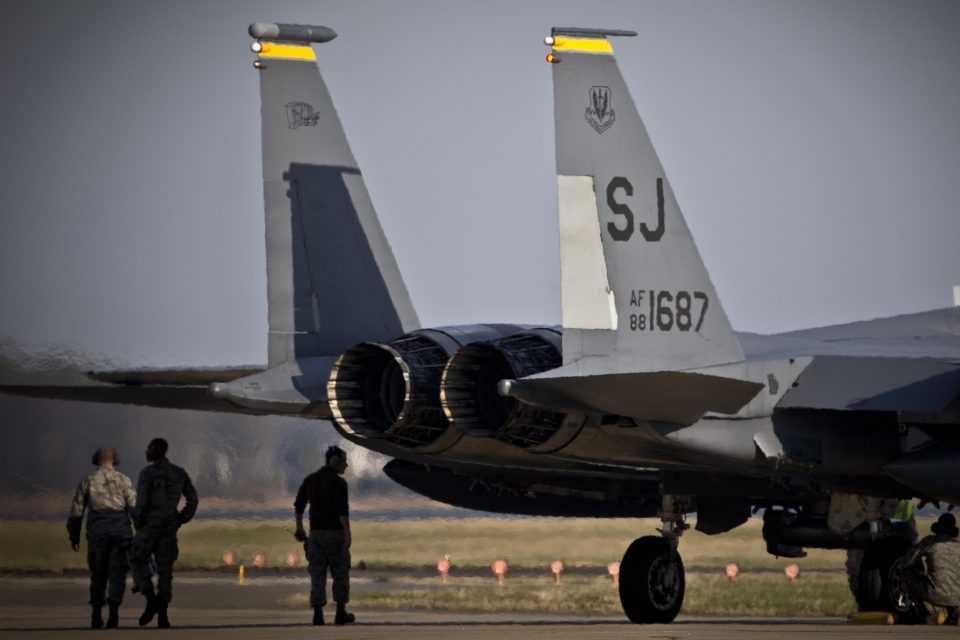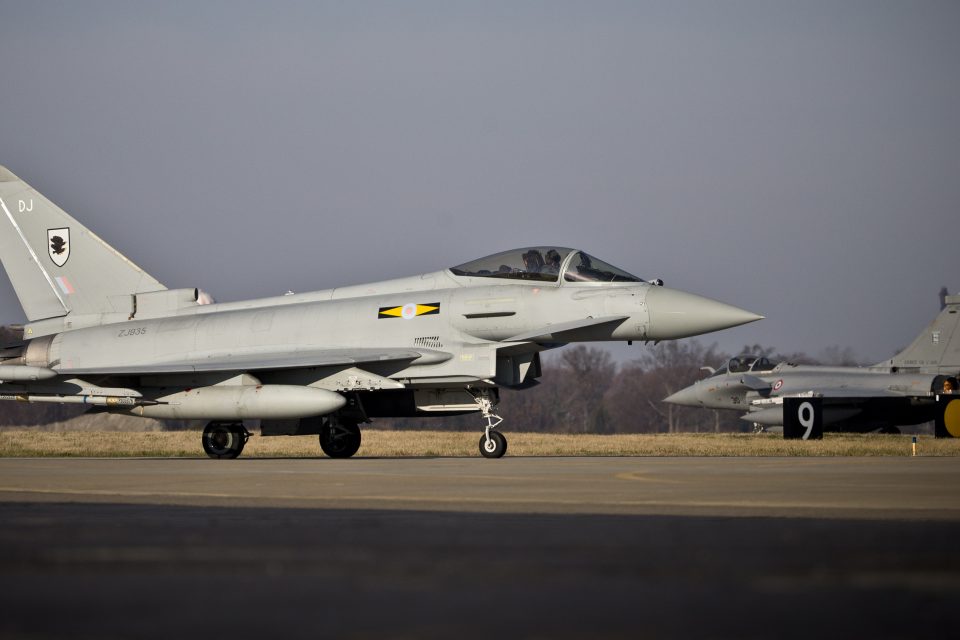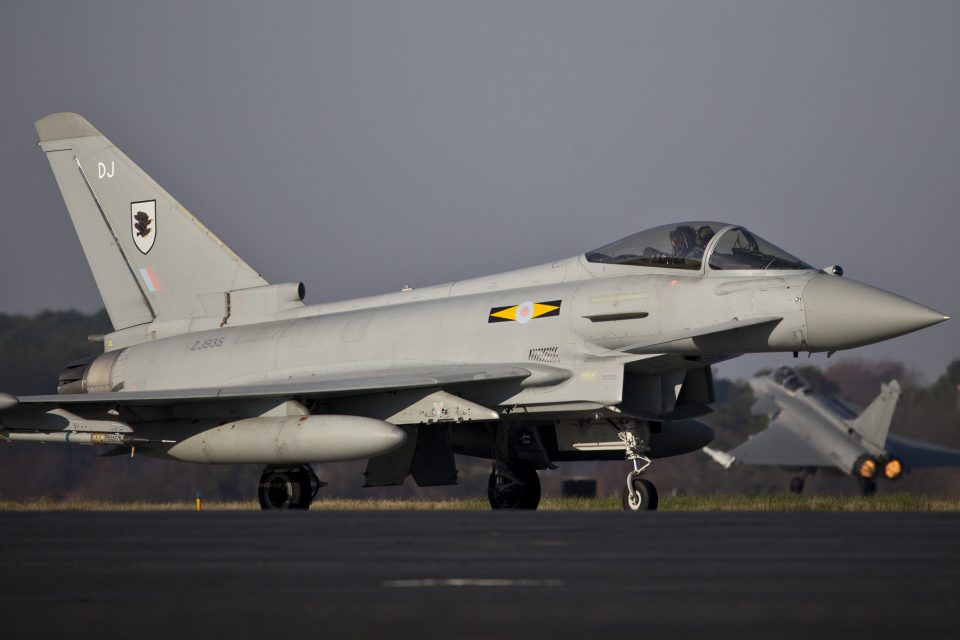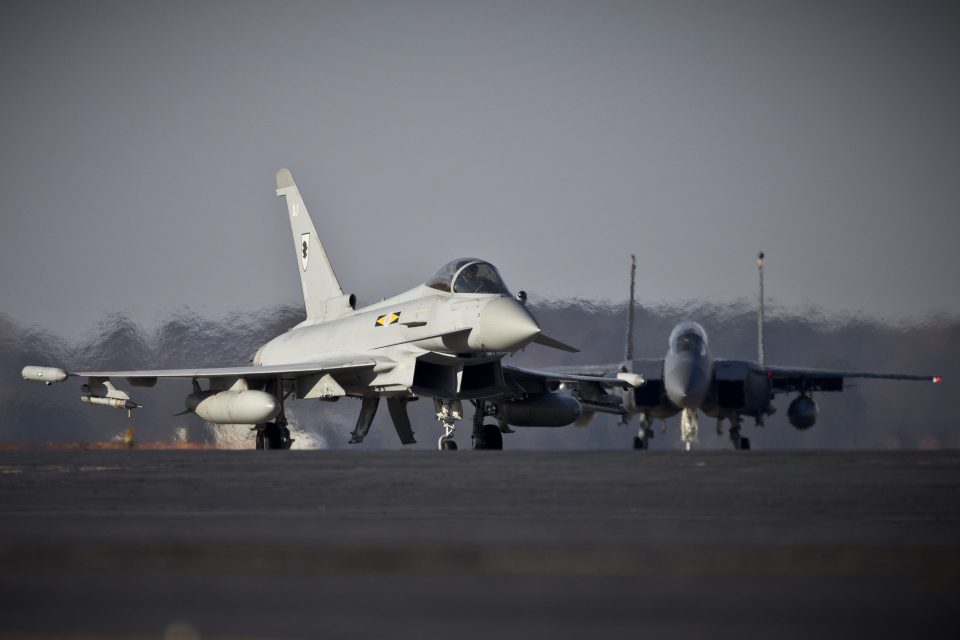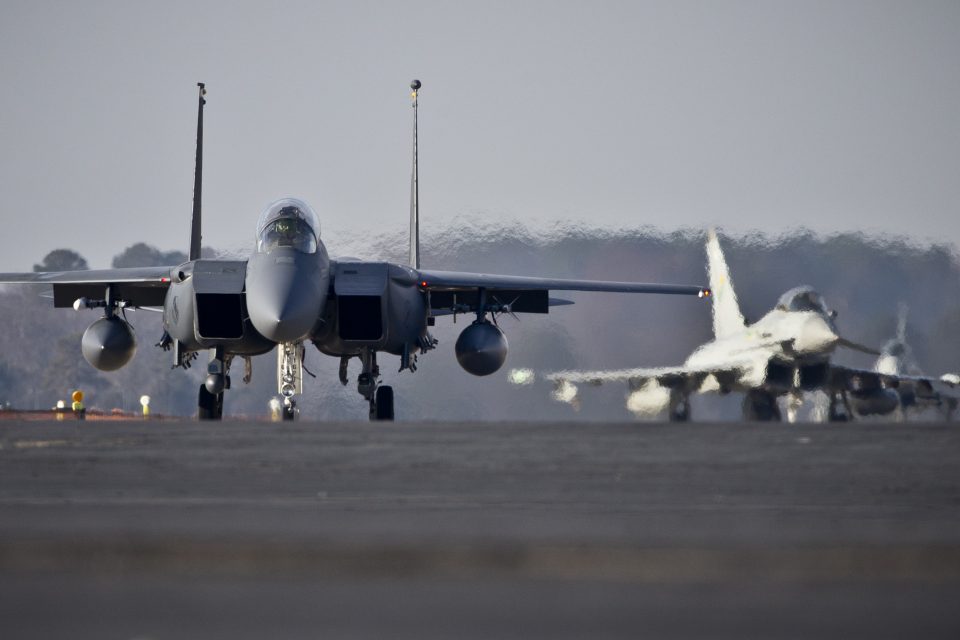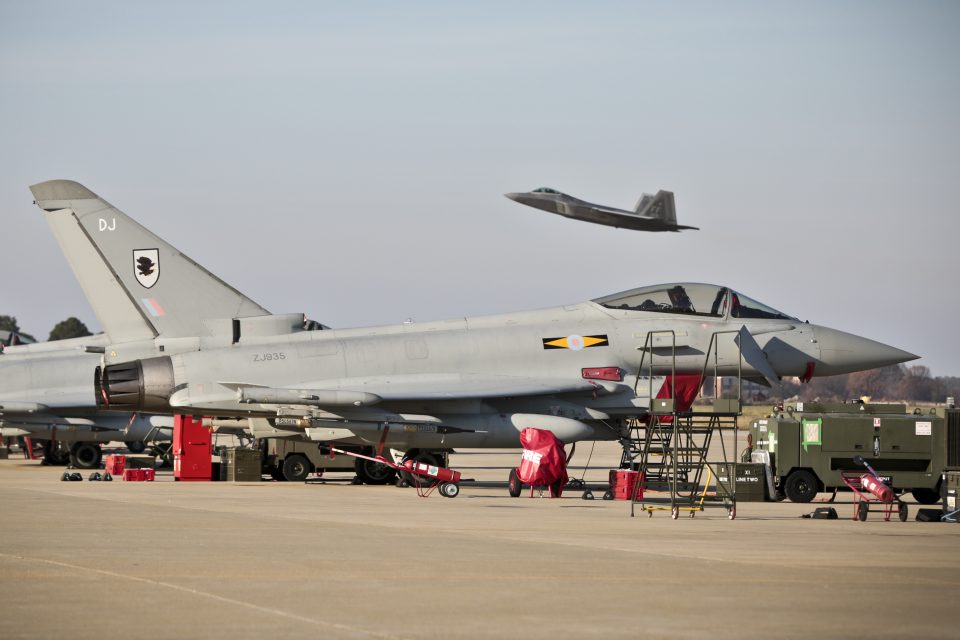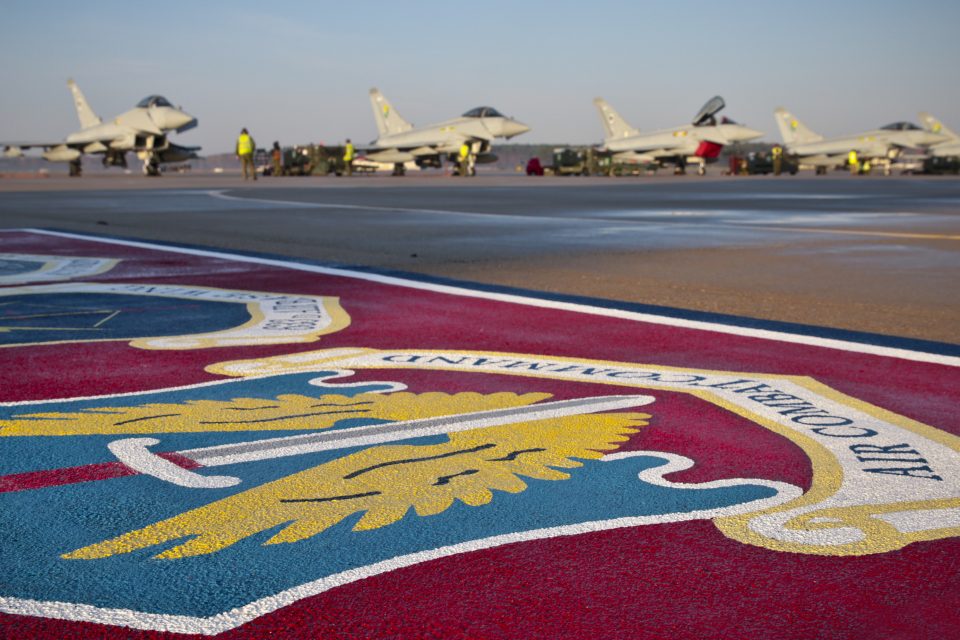2016-02-12 The Eurofighter is being effectively modernized with a new radar and with the integration of longer-range missiles for both ground attack and air-to-air operations.
The Eurofighter as well is subsuming Tornado missions with the integration of key missiles such as Brimstone and Spear.
According to a press release from Eurofighter on February 11, 2016, progress with the integration of the Storm Shadow and Meteor onboard the Eurofighter is described.
Further trials of the Storm Shadow deep strike missile and Meteor Beyond Visual Range Air-to-Air missile have been successfully completed as part of a programme of improvements which will further enhance the powerful swing-role capability of the Eurofighter Typhoon combat jet.
It has been confirmed that a new operational release of the Storm Shadow missile was carried out in the UK Ministry of Defence’s Hebrides range in Scotland.
The release – from the Italian Instrumented Production Aircraft (IPA) 2 – is part of work conducted to expand the safe weapon trajectory data envelope of the missile. The test, which was led by Finmeccanica – Aircraft Division, with the support of Eurofighter, BAE Systems, Airbus Defence and Space, and MBDA, follows the completion of ground trials on the weapon and a successful release of Storm Shadow in November 2015.
It was followed by another firing of a Meteor Beyond Visual Range Air-to-Air missile using UK Typhoon aircraft IPA6, also at the Hebrides range. Led by BAE Systems with support from MBDA, Selex, QinetiQ and UK Ministry of Defence (MOD) and the Eurofighter teams.
The firing follows trials held in late 2015 which saw the Typhoon aircraft conduct guided Meteor firings against real air targets in pre-planned scenarios.
The Storm Shadow and Meteor firings are part of the flight test campaign for the Phase 2 Enhancement (P2E) programme which will introduce a range of new and improved long range attack capabilities to Typhoon.
Commenting on the Storm Shadow tests, Enrico Scarabotto, the Italian Chief Test pilot who flew the IPA2, said: “The integration of the weapon further enhances Typhoon’s potent multi-role and swing-role capabilities, adding new capability to strike in day or night, in all-weather conditions.
Storm Shadow adds attack stand-off capability to Typhoon which now really accomplishes every possible role in the combat scenario. The aircraft retains excellent performance in an incredible low pilot workload cockpit environment, essential for a single seat multirole aircraft.”
Steve Greenbank, Director of Aircraft Programmes for Military Air & Information, BAE Systems, said: “These latest Meteor firing trials are another step forward in the integration of the missile onto the Typhoon aircraft, demonstrating they can operate safely, accurately and effectively.
“2015 was a hugely exciting 12 months for Typhoon, with contracts placed for new capabilities and enhancements.
The integration of Meteor further enhance the aircraft’s abilities to ensure Typhoon maintains its position as the most capable, agile and enduring swing role fighter in the international market.
These trials also form important maturity points for the UKs Project CENTURION plan, which will see Typhoon provide the continuous delivery of key combat air capabilities as Tornado moves towards its out-of-service date.”
In addition to Meteor and Storm Shadow, the integration of MBDA’s Brimstone, part of the Phase 3 Enhancements (P3E) programme, is on contract for Eurofighter Typhoon.
Brimstone is a precision attack missile with proven capabilities against both static and moving/manoeuvring targets.
Two Eurofighters recently crossed the Atlantic as escorts for the first Italian-built F-35 which flew across the Atlantic and landed at Pax River on February 5, 2016.
The planes landed on the East Coast and then have progressed to Nellis AFB to participate in Red Flag 2016.
Typhoons from 4th Stormo, Grosseto, Italy are participating in Red Flag 2016 and will engage in the escort role during the exercise.
When Ninja, the F-35 pilot who flew across the Atlantic, discussed the flight with reporters, he made the point that the flight package which crossed the Atlantic which was completely Italian – KC-767s, C-130s, Typhoons, and his F-35 – represented the future of the Italian Air Force as an integrated force.
With regard to last year’s initial Red Flag exercise, the RAF described the role of their Typhoon in the exercise as follows:
The world’s most intensive air combat training exercise has concluded at Nellis Air Force Base, USA. Over the course of the three-week Red Flag exercise RAF Typhoon and Sentinel aircraft flew twice daily sorties against complex air defences designed to mirror what they would expect to encounter on a real operation against a near-peer adversary. Whilst airborne they were given vital tactical information from radars and other sensors by aerospace battle managers from 1 Air Control Centre.
For Group Captain Mark Chappell, Station Commander of RAF Lossiemouth Red Flag is essential training. He said: “This exercise continues to be the most challenging and rewarding training for all domains and so while it has been hard work for everyone involved it’s been well worth the effort. Everyone has received unparalleled levels of training and we are thus far better equipped for any future contingency which we may be asked to support.”
During Red Flag Typhoon FGR4 multi-role fighters flew 150 sorties with each pilot deployed taking the opportunity to gain experience of dropping one of the 25 Paveway IV bombs precision guided bombs used by the RAF on the exercise.
One of the 1(Fighter) Squadron Typhoon pilots was Flight Lieutenant Alec Palfreyman who said: “Red Flag was everything I expected it to be and more. The way they pull all the elements together into one mission is something we can’t do at home. It’s of great value both to the Typhoon Force and personally.
“With 70 plus aircraft in the air to be able to fight your way into a target, drop a bomb and then fight your way out and survive is a challenge. I definitely feel the sharpest I’ve been at the end of the flying having been exposed to the closest thing to doing it for real. It certainly gives you confidence for the future.”
The training is only possible through the work of the engineers who keep the Typhoons serviceable. Flt Lt Darren Tremble is a Junior Engineering Officer on 1(F) Squadron. He said: “It’s been very hard work across all trades but it’s provided the opportunity to work in a different environment which they may encounter on operations. I’ve been particularly pleased with the serviceability of the Typhoons.”
The exercise was similarly successful for V(AC) Squadron which deployed a pair of Sentinel R1 surveillance aircraft to Red Flag for the first time. The RAF Waddington based unit had a 100% mission success rate, flying a sortie on each of the two missions flown each day over the vast Nellis training ranges.
The Sentinel aircraft have returned to the UK but the Typhoons will remain in the USA to participate in Exercise Western Zephyr. Led by RAF Lossiemouth based 6 Squadron, the exercise will see the RAF work closely with the F-22 Raptors of the US Air Force’s 1st Fighter Wing at Langley Air Force Base, Virginia. The exercise continues the interoperability and integration of RAF operations with the fifth-generation F-22 ahead of the introduction into service of the F-35 Lightning II to its combat air inventory.
And the recent Trilateral Exercise held in Langley AFB, highlighted the integration of the F-22 with the Typhoon, and for the first time, the French Air Force introduced the Rafale to the process as well.
A key element of the exercise was enhancing the capabilities of the air fleet to work among the pilots horizontally and not just directed hierarchically from an AWACS, which is a key aspect of a fifth generation enabled force.
The Typhoons from XI squadron had been to Langley in 2013 for training with F-22s, but this was the first time for the Rafales.
As all three aircraft pass the 10 year operational mark, there is enough combat experience under their collective combat belts to take the next step, and not simply be the best aircraft in each individual air force, but to come together to craft a much more powerful coalition capability.
https://sldinfo.com/a-special-report-on-eurofighter-modernization-shaping-a-way-ahead/
The first slideshow shows various photos of the typhoons.
The first photo shows the Typhoons in the formation along with the F-35 crossing the Atlantic and is credited to the Italian Ministry of Defence.
The second and third show RAF Typhoons involved in Red Flag 2015.
The fourth shows the Typhoon with the Storm Shadow.
The fifth shows the Typhoon with a Meteor missile.
And the final photo shows the Typhoon with both Storm Shadow and Meteor.
The second slideshow shows Typhoons during the Trilateral Exercise.
The video below shows Typhoons from RAF 3rd Squadron (based at Coningsby) participating in Red Flag 16-1.
Red Flag 16-1 Continues from SldInfo.com on Vimeo.
02/14/2015: As the second week of Red Flag wraps up, over 130 aircraft are taking to the skies for 16-1.
Watch a variety of aircraft from multiple branches of the military and coalition partners focus on combat readiness as they head out the Nevada Test and Training Range.
Credit:99th Air Base Wing Public Affairs:2/9/16
And the video below shows the RAF coming to last year’s Red Flag with Typhoons crossing the Atlantic supported by their new A330MRTT tankers.


